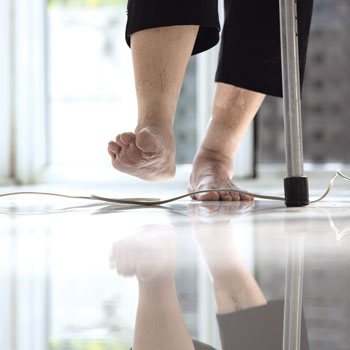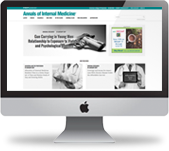Pearls inform primary care for breast cancer prevention
Counseling women at high risk for breast cancer involves discussing enhanced surveillance, lifestyle interventions, and risk-reducing medications.
As general internal medicine physicians, it falls in our wheelhouse to be able to counsel women on their breast cancer risk. Women are considered to be high risk if they have had a history of chest radiation prior to the age of 30, have a known BRCA or other susceptibility gene, have a history of benign atypical lesions, such as atypical hyperplasia or lobular carcinoma in situ, or have an estimated lifetime risk of developing breast cancer of 20% or greater. There are things to offer these women that reduce their breast cancer risk, including risk-reducing medications or counsel on lifestyle interventions, as well as enhanced surveillance to identify breast cancer early.
Once I've identified that a woman has an elevated risk, I review the counseling in two different categories. First, I talk to her about ways that we're going to work to find breast cancer earlier via enhanced surveillance, and secondly, we're going to discuss medicines that are effective for the primary prevention of breast cancer. Most people have heard of these medications because they're used in the context of reducing breast cancer recurrence, but here I'm really talking about it as a primary prevention tool.
Enhanced surveillance, based on the guidelines, is defined as a mammogram every year starting at age 40 or depending on when a first-degree relative had breast cancer, and a contrast study, oftentimes a breast MRI, typically alternating every six months.
In addition to enhanced surveillance, let's talk about ways to reduce her risk of breast cancer. The three different ways we have to reduce breast cancer are lifestyle interventions, risk-reducing medications, and for those women who have super high risk, risk-reducing bilateral mastectomy. That's oftentimes really only going to be offered to those women who have a BRCA mutation or other highly penetrant gene (or very strong family history).
Healthy lifestyle habits can be offered to all women and can make a big difference in lowering breast cancer risk. So it's really empowering; this is what I share with patients. If you're implementing these, you're actively doing something to reduce breast cancer risk (as well as cardiovascular disease risk and dementia risk). Lifestyle interventions include exercising about 150 minutes per week, and just walking would count; eating a healthy, balanced diet, including lots of fruits and vegetables and lean meats; minimizing or avoiding red meats, especially processed red meats; and minimizing or avoiding alcohol. If they do drink alcohol, they should drink less than one alcoholic drink per day. Taken together, when you look at the data, if women are implementing healthy lifestyle habits regularly, that's associated with more than a 30% reduction in breast cancer risk.
Risk factors for breast cancer very much mirror other risk factors that are strong in women for other diseases and risk factors that we start to see go up in midlife. I do a lot of menopause care, so that becomes very salient. As general internal medicine physicians, we take care of a lot of people at midlife and beyond, but specifically, cardiovascular disease risk is one of those things that overlaps with breast cancer risk. It's fantastic that the lifestyle interventions that benefit or reduce breast cancer risk are also the same lifestyle interventions that reduce cardiovascular disease risk, so you get that two-for-one benefit.
Once you identify a woman as at an elevated risk, she's going to be doing more testing, and that testing can be associated with harm, including just the discomfort of doing the testing. In many places, if a woman does have discomfort with her mammogram, she can ask the tech to be conscious of that and attempt to use less pressure. And there's other techniques that we can do to help minimize that discomfort. But the reality is, to get the best images, you do have to apply pressure to the breast tissue.
Breast MRI is a little bit different. Women lay flat with their breasts hanging down through two holes for the MRI. In most places, they've been able to reduce the time of the MRI, and there's even shorter, abbreviated MRIs that can be used for supplemental screening, not high-risk screening. For those women who have a challenge with MRI or are allergic to the gadolinium contrast with MRI, there are some alternative imaging options, including contrast-enhanced mammograms and medications, that can help make that process go more smoothly or easier for women. The moral of the story is here is to validate women's experience and listen to them, but we also want to make sure that we're doing what we can to screen and then catch breast cancer early.
In addition to lifestyle and surveillance, we as general internal medicine physicians can offer our patients who are at an elevated risk medications to reduce breast cancer. Some people call these chemoprevention medications. I typically use the term “risk-reducing medications” because the term “chemoprevention” sounds like chemotherapy, which for a lot of women is a little bit triggering and sounds scary, honestly. Risk-reducing describes it nicely, because these medications have been studied in large randomized studies and taken together can reduce risk anywhere from 41% to 79%.
We can offer these to patients in primary care. They include tamoxifen and raloxifene, as well as aromatase inhibitors like exemestane and anastrozole. Tamoxifen and raloxifene are FDA approved for breast cancer risk reduction and exemestane and anastrozole are used off label for this indication. Tamoxifen can be used for premenopausal women, and then the rest can be used for postmenopausal women.
There are some caveats to think about when we use these medications, like the side effects that they can lead to and the risks associated with them, and that can help guide the therapy you offer. For example, the aromatase inhibitors, when using them for postmenopausal women, can be associated with osteoporosis, so you need to get a bone density test first. For a woman I'm seeing who might have osteoporosis, I would favor using raloxifene if I'm going to offer a risk-reducing medication. But those are just some of those caveats. If you use them for five years, and if you can offer her about a 50% reduction in her breast cancer risk, that's pretty remarkable. Add that to those healthy lifestyle habits and that enhanced surveillance, and that can make a pretty remarkable difference in a woman's life.



